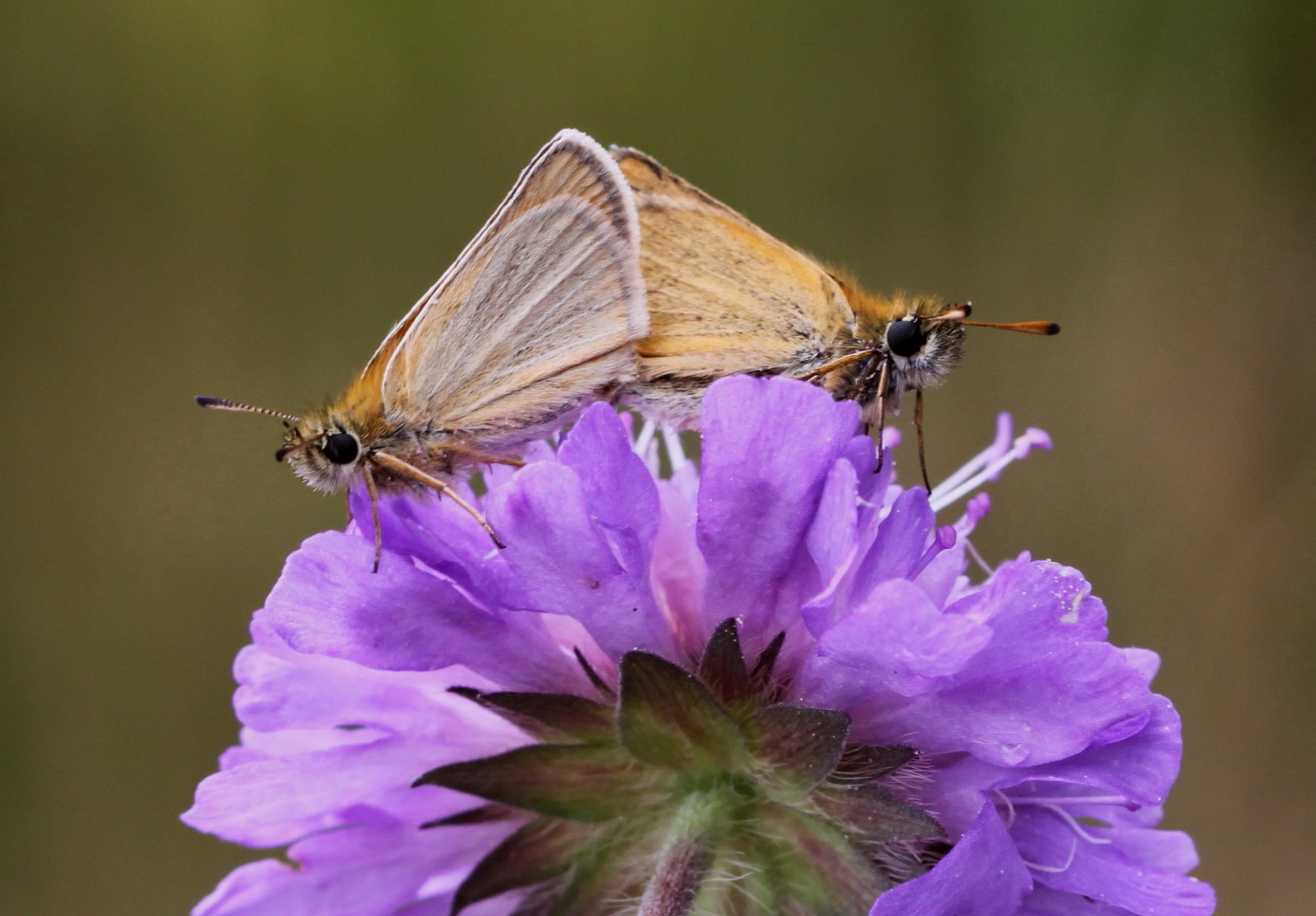.JPG)
Thymelicus lineola
Essex Skippers may be found on any patch of rough, uncultivated grassland where there is an abundance of Cocksfoot and/or Creeping Soft-grass, their favoured larval foodplants. This small meadow skipper is undoubtedly under-recorded, as it often lives side-by-side with Small Skippers, and “in the field” they are not easy to tell apart. The antennae tips of Essex Skipper look as if they have been dipped in black ink, but to see this ID feature we need to view the skipper from below, and that is not always easy when the insect is just a few inches off the ground! Another difference is the sex-brand on the forewing of the male which is very short and parallel to the wing veins, compared to that of the Small Skipper which is much longer, 'wiggly', and runs across the veins.
This species is single brooded, and whilst a few may be seen in the last week of June, the bulk of sightings will be in July. Essex Skippers emerge 7-10 days later than Small Skippers and conversely can be found 7-10 days after Small Skippers have all but disappeared. This slight difference in their respective flight periods can be helpful when trying to decide between these tiny meadow skippers.
They are well-distributed in the county, wherever there is rough grassland and their larval foodplants are present. There is a very large population at the south-west end of Fairmile Bottom LNR at SU986091. Other sites include Chantry Hill at TQ0812, Friston Forest Gallops at TV553997, Windover Hill at TQ532032, and dozens of other locations.
.JPG)
Territorial male on grass stem – photo by Martin Kalaher
.JPG)
Male on Ox-eye Daisy seed head
.JPG)
Female nectaring on Birdsfoot Trefoil
.JPG)
Female nectaring on Field Scabious
.JPG)
Male perched on Betony and showing the black antennae tips

A mating pair
Butterfly Conservation Essex Skipper